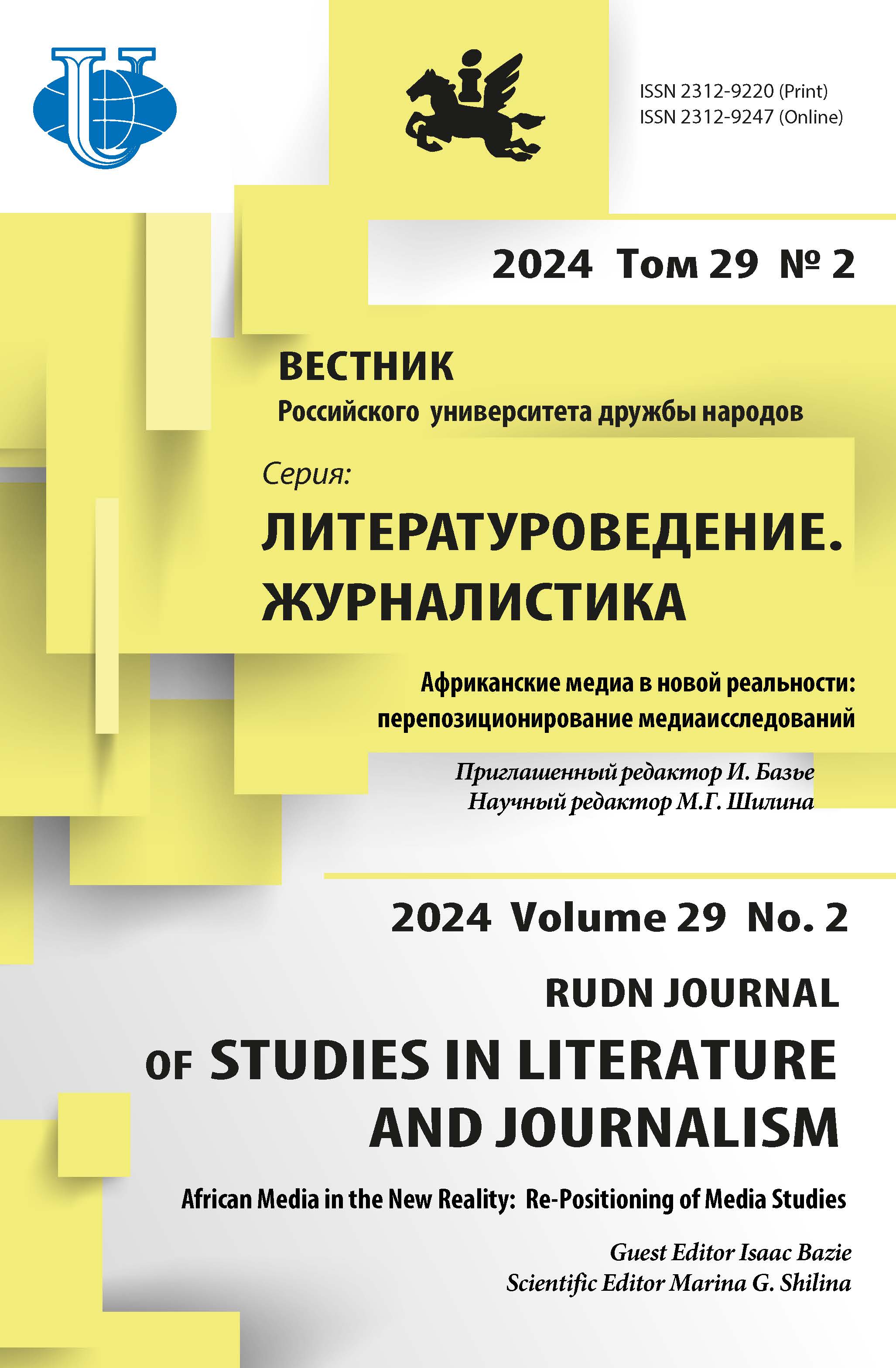Семиогенезис мифа о «новой экзистенции» в романе Л. Андреева «Дневник Сатаны»
- Авторы: Гарипова Г.Т.1
-
Учреждения:
- Владимирский государственный университет имени А.Г. и Н.Г. Столетовых
- Выпуск: Том 25, № 1 (2020)
- Страницы: 7-16
- Раздел: Литературоведение
- URL: https://journals.rudn.ru/literary-criticism/article/view/23604
- DOI: https://doi.org/10.22363/2312-9220-2020-25-1-7-16
Цитировать
Полный текст
Аннотация
Статья посвящена анализу проблемы идентификации семиотических составляющих авторского неомифа о «вочеловечившемся Сатане» в романе Л. Андреева «Дневник Сатаны» в системе анализа междисциплинарной метаморфной модели инструментариями экзистенциального метода. Новизна данного исследования определяется анализом семиотической составляющей концептов «Человек - Cатана» в контексте понятия «живая онтологическая телесность» в системе междисциплинарной метаморфной модели Зальтмана. В качестве объекта исследования были избраны лингвокультурные концепты «Человек - Cатана» как ключевые символы метаморфной модели «вочеловечившийся Сатана», отражающие важнейшие категории и установки антропологической и религиозно-философской концепции писателя.
Об авторах
Гульчира Талгатовна Гарипова
Владимирский государственный университет имени А.Г. и Н.Г. Столетовых
Автор, ответственный за переписку.
Email: ggaripova2017@yandex.ru
кандидат филологических наук, доцент кафедры русской и зарубежной филологии
Российская Федерация, 600000, Владимир, ул. Никитская, 1Список литературы
- Андреев Л. Дневник Сатаны: инфернальные метаморфозы в изложении русских писателей / сост. В. Шаповалов. Ташкент: Шарк, 1993. 426 с. (Тени Люцифера).
- Ахутин А.В. София и черт (Кант перед лицом русской религиозной метафизики) // Вопросы философии. 1990. № 1. С. 51-69.
- Бердяев Н. Русская идея. СПб.: Азбука-классика, 2008.
- Заманская В.В. Экзистенциальная традиция в русской литературе ХХ века: диалоги на границах столетий: учебное пособие. М.: Флинта: Наука, 2002. 304 с.
- Кребель И.А. Мифопоэтика Серебряного века: опыт топологической рефлексии. СПб.: Алетейя, 2010. 592 с.
- Моисеев В.И. Онтология живой телесности. Лекция 8. URL: http://www.neoallunity.ru/ lec/lec8.pdf (дата обращения: 10.12.2019).
- Ожегов С.И. Словарь русского языка / под ред. Н.Ю. Шведовой. 11-е изд., стер. М.: Рус. яз., 1975. 847 с.
- Ортега-и-Гассет Х. Две великие метафоры // Теория метафоры. М.: Прогресс, 1990. С. 68-81.
- Романюха С. Метаморфная модель Зальтмана ZMET - история и суть методологии. 2010. URL: http://psyfactor.org/lib/zmet.htm (дата обращения: 26.10.2019).
- Тынянов Ю. Проблема стихотворного языка: статьи. М.: Сов. писатель, 1965. 301 с.
- Шафранская Э.Ф. Контекстуальная семантика заглавия романа Михаила Шишкина «Взятие Измаила» // Respectus Philologicus. 2016. № 30 (35). С. 2-10.
















